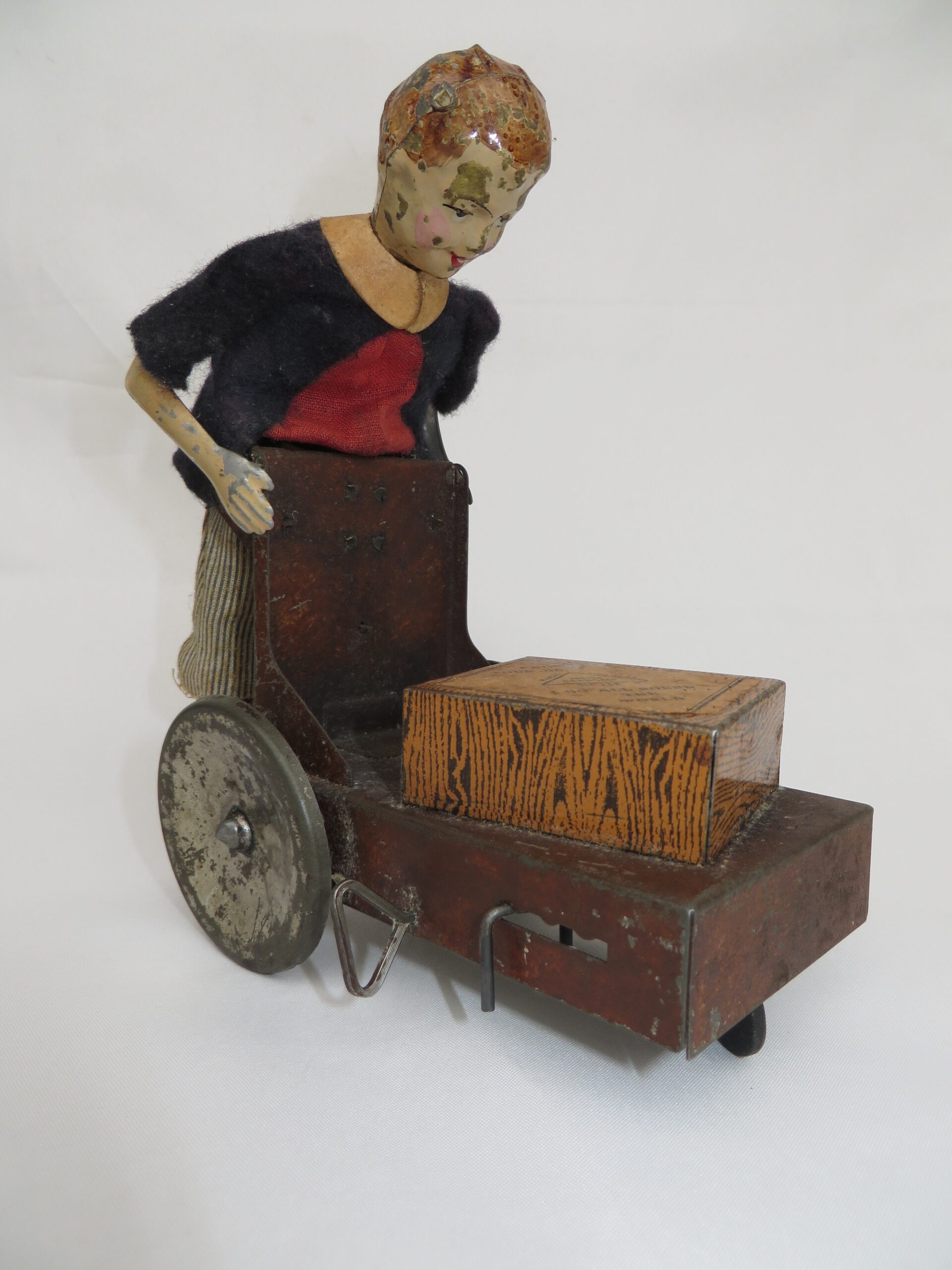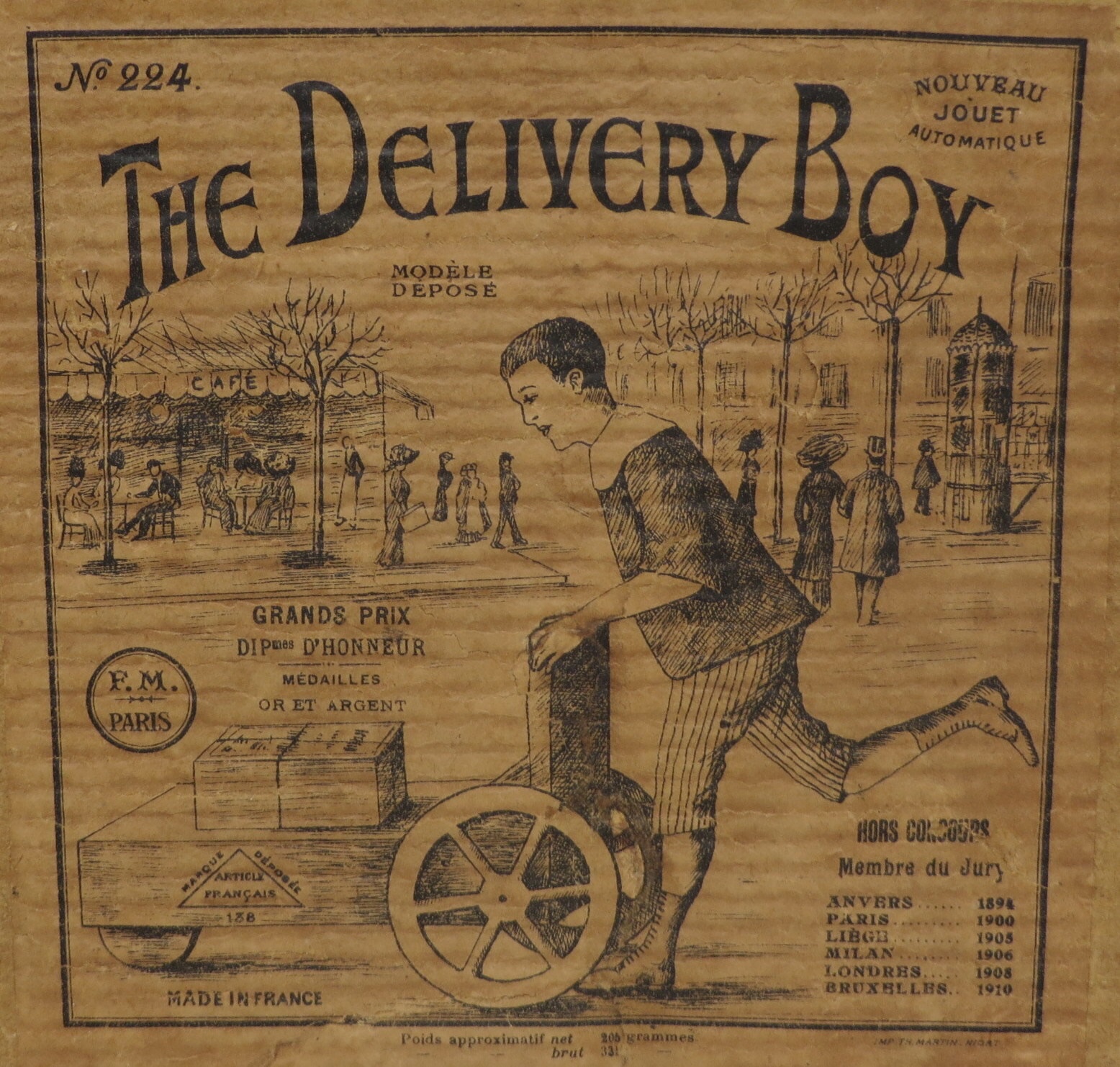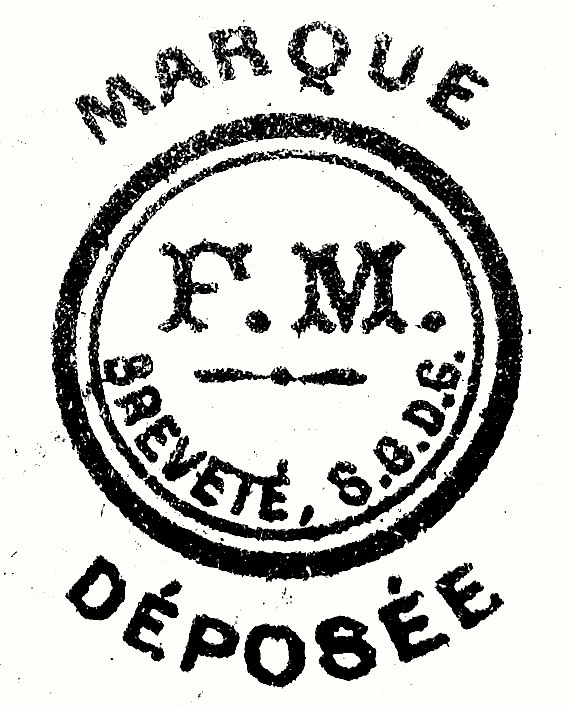I found this French book from 1922 with a very heavy title. “Manuel du Fabricant de Jouets” (“Manual of the Toy Manufacturer”) The description is very general and not deeply technical. If you read it, you will have a very quick general idea of how toys are put together in parts. So it is a guideline to produce various kinds of toys. In particular I found the directions for making tinplate toys and special to make a “Le Petit Livreur”, whether it is de description for the model of Martin, Flersheim, Victor Bonnet or another manufacturer, I don’t know, but as the first lines already say it is a general description and therefore also for other tin toys.
Translation from the book: “Manuel du Fabricant de Jouets” the writer is A. Broquelet in 1922

The little delivery boy.
As for any of the other articles, it is first necessary to establish a general drawing of the object and then an analytical drawing of each of the individual parts that make up it, paying attention to the location of the tabs and indicate holes needed to connect all the parts, this drawing is essential to identify the templates that will be used to make the dies for cutting.
This cutting is done by means of balancing presses; it is enough to put on the matrix, which is placed under the handle, a strip of tinplate suitable for the size of the model, then with the right hand with the crank move it forward to obtain the desired part .
This first operation produces flat parts, to give them the desired relief, proceed to their stamping which is carried out, as we have already indicated using a mold either in cast iron or in steel, and a counterpart.
That happens with all the parts that will constitute the automaton.

The worker assembles them and then takes them to a machine that compresses them and, as the case may be, using a small pair of pliers to flatten the wire, folds or bends the tabs so that they cannot be detached from the holes on which it is locked.
The various movements of the automaton are then obtained by means of cams, connecting rods and eccentrics; this is how the leg is controlled by connecting rods and eccentrics mounted on the wheels, which in turn are controlled by gears which constitute real clockwork movements, while a connecting rod controls a leg, a another connecting rod makes the knee joint maneuver, and the front wheel gives direction.
The cutting of the gears which enter the mechanism is done in the same way as that of the other parts.
When the toy is assembled, it only remains to paint it and to adjust it to ensure its proper functioning.
